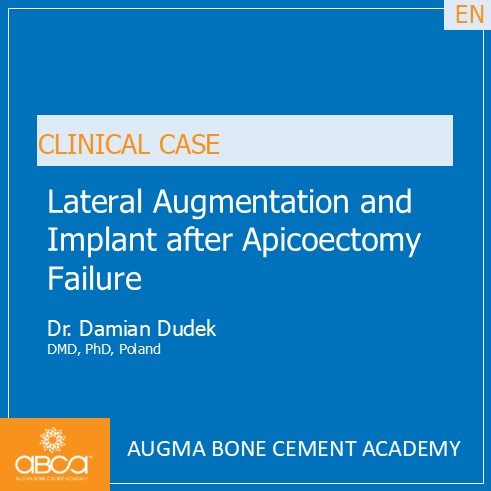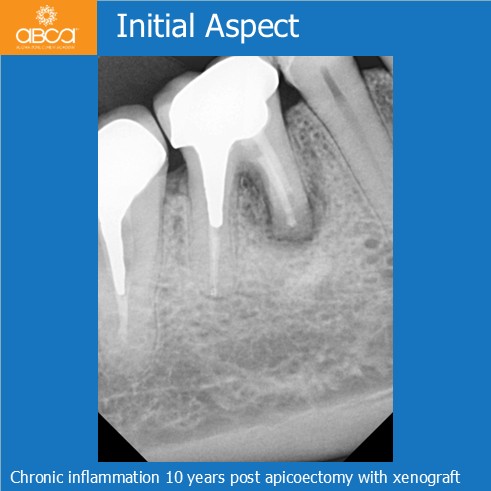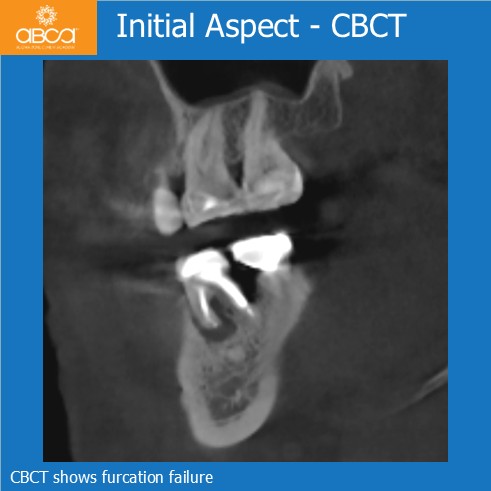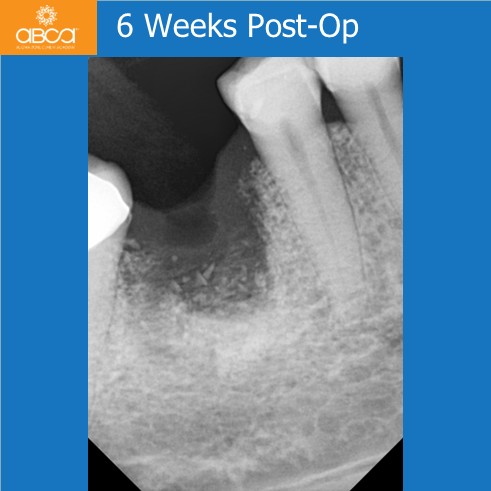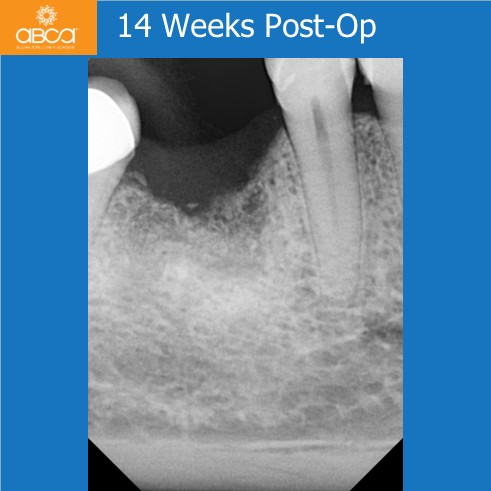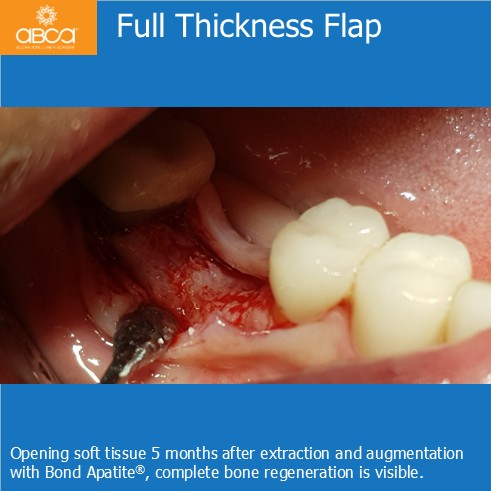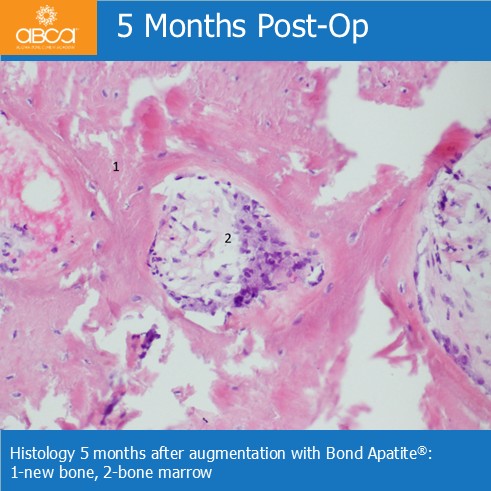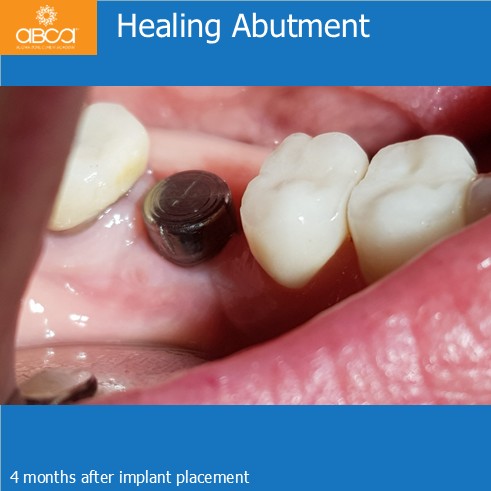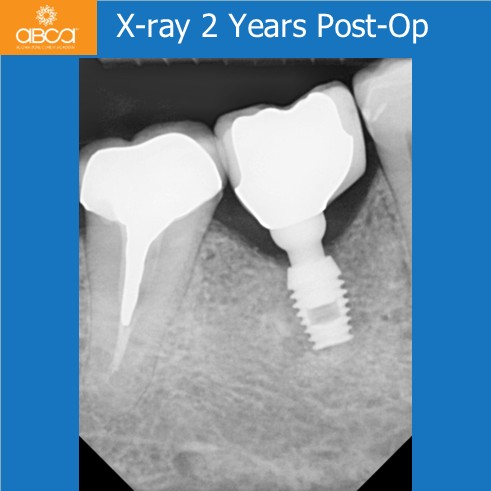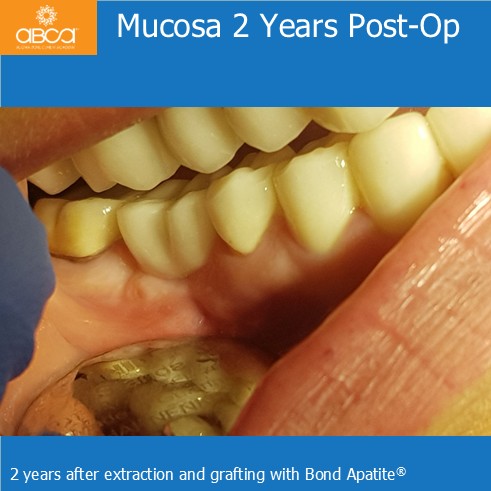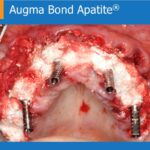The patient is a healthy 54-year-old woman. Ten years prior, she underwent an apicoectomy on the mesial root of tooth #46 (30) and augmentation of the site with xenograft and a collagen membrane. Over the years she developed pain on biting and general discomfort.
Radiographic examination showed furcation damage and a complete lack of buccal cortical lamina regeneration, a decade after the xenograft based augmentation.
Treatment included extraction of tooth #46 (30) and debrided the site using Augma dedicated burs. We then filled the bone defect around the implant with 1 cc of Bond Apatite®.
This case demonstrates that animal-derived xenografts integrate with human bone but do not themselves create true bone regeneration.
The patient showed good healing and no clinical symptoms for up to five months after surgery. During the second procedure, we observed true bone regeneration, including reformation of the buccal cortical lamina. Histology (bone-particle sample) confirmed this finding. A Bicon implant (D 4.5 mm, L 6.0 mm) was placed with excellent primary stability and strong bleeding from the internal bone during osteotomy preparation.
Conclusion: We successfully regenerated the bone defect due to the bioactive and osteoconductive properties of Bond Apatite®. Clinical and radiological follow-up two years after prosthetic restoration showed excellent results.
